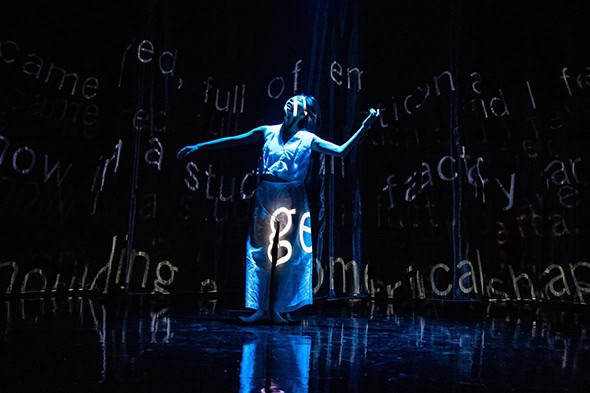Bongsu Park’s Dream Ritual at The Coronet Theatre
Posted: August 4th, 2019 | Author: Nicholas Minns & Caterina Albano | Filed under: Performance, Visual Art | Tags: Bongsu Park, Collective A, Connor Sullivan, Dream Ritual, haihm, Jinyeob Cha | Comments Off on Bongsu Park’s Dream Ritual at The Coronet TheatreBongsu Park and Jinyeob Cha, Dream Ritual, The Coronet Theatre, July 3

The idea of buying and selling dreams is part of Korean culture that goes back to the Samguk Sagi, Korea’s oldest surviving chronicle of its history. Derived from the notion of a dream as a conscious manifestation of a universal unconscious, one person’s auspicious dream can become a transferable asset to another, and thus subject to a ritual form of barter. Dream Ritual, a solo dance piece conceived and directed by Bongsu Park and choreographed and performed by Jinyeob Cha, is both an illustration of this process and, through Park’s Dream Project, a prelude to an upcoming auction of dreams with the profits going to charity.
Park is a London-based Korean visual artist, while Cha is the artistic director of the Korean interdisciplinary dance performance group, Collective A. Together with electronic musician and producer haihm, Park and Cha have conceived Dream Ritual as a kind of shamanistic ritual in contemporary dance form ‘in which omens of shared dreams are enhanced and elevated to the world of good spirits before ownership of the dream is transferred.’
The Coronet stage is hung with vertical strips of semi-transparent material that are burnished silver and red in Connor Sullivan’s lighting and, with a black reflective floor, suggest both different planes of reality and ritualistic levels of sublimation. Cha enters drawing with her a transparent curtain across the front of the stage behind which she begins to perform. Park uses the curtain as a screen on which she projects digitally magnified and multiplied projections of Cha’s face and body that intersect and interact with her figure behind it, creating Rorschach-like images and an array of diffractive silhouettes in a visual counterpoint to Cha’s choreography. While haihm’s spectral sound, and Cha’s soft, wave-like articulation and closed eyes allude to the dream state, the overlaying of Park’s imagery initially suggests the distillation of mythology as the currency of a symbolic transaction. Cha dances to a Korean account from the myth of Samguk Yusa of the first dream bargain, with projected English text, and then to contemporary dreams furnished by the public who had been invited to contribute through the project’s website.
This airing of dreams, while consistent with the proposed aims of the project, weights the performance with an extensive use of narrative that is at odds with the condensed associative language and rarified psychic quality of both rituals and dreams. What begins as a ‘journey through the stages of sleep, and deep into the subconscious’, becomes engulfed in the prosaic intelligibility of dream-like stories and the digital virtuosity of the projected words and images. Dreams have the urgent reality of a symbolic message — which is why we attach such importance to them — and they impress themselves on our memory as photographic images. Dreams and rituals also have an incongruous, if not dark, quick-silver power; what Park has done is to portray this complexity too simplistically by overlapping floating letters, kaleidoscopic imagery and sound on Cha’s physical body. The effect dilutes the enhancement and elevation of dreams the creators had initially intended and thus weakens the relationship between audience and performance that is in itself a form of ritual transaction.
As a visual artist, Park’s interest in ritual imagery extends beyond the performance into a photographic display and three video works. In the bar is a striking series of eight of her photographic prints with titles Ritual no. 1 through no. 8 whose mirrored forms of a manufactured dream aesthetic work better here as two-dimensional prints than as digital projections on stage. The video works — Lethe (2015), Internal Library (2017) and Cube (2011) — see Park experimenting with the layering of visual and choreographic art that foreshadows Dream Ritual but which suffer from a similar over-simplification of the unconscious by a reliance on the treatment of literal, narrative elements.